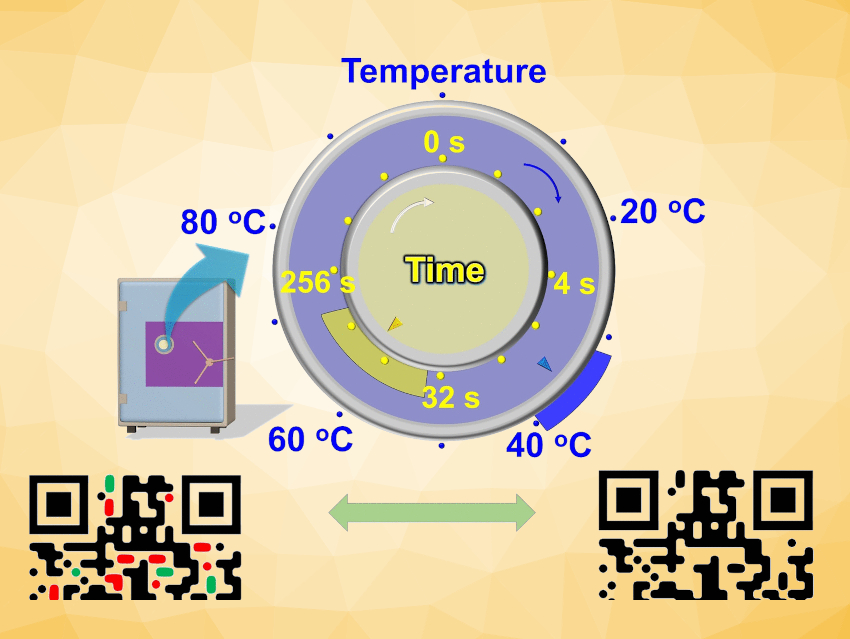The development of highly secure but simple and inexpensive encryption technology for the prevention of data leaks and forgeries is decidedly challenging. Zhikun Zheng, Xudong Chen, Wei Liu, Sun Yat-sen University, Guangzhou, China, and colleagues have introduced a “double lock” based on thermoresponsive polymer hydrogels that encrypt information so that it can only be read at a specific window in temperature and time.
Physical Encryption
In addition to digital encryption methods, physical methods play an important role. Their decoding is typically based on external stimuli such as light or heat. Multiple stimuli offer more security, but make reading the data cumbersome and complex. “Addition of the time domain greatly raises the chance to achieve the unity of security and simpleness,” according to the team. “We were inspired by the baking of bread: Delicious bread can only be produced if the baking temperature is not too low or too high and the baking time is not too short or too long.”
For their novel “double encryption system”, the researchers use thermoresponsive polymer hydrogels—cross-linked chain molecules with water incorporated into their “gaps”. Above or below a specific temperature, the clear gels become opaque due to partial unmixing. There are LCST and UCST gels, which have lower or upper critical solution temperatures, respectively. The phase retention and critical temperature can be controlled via the content of –CO–NH2 groups in the main chain of the polymer hydrogels. The density of cross-linking determines the rate of the phase transition.
“Double Lock” Labels
As an example of a locked label, the team used transparent acrylic plates with grooves in the pattern of a QR code. Three different gels were put in defined areas of the pattern: a UCST gel with a phase change around 40 °C and two LCST gels with a phase change at 33 °C (one with a fast phase transition and one with a slow phase change). Below 20 °C, the UCST gel is opaque, but highly shrinking. The pattern is deformed and unreadable. Between 20 and 33 °C, it swells and the part of the code formed by this gel becomes readable. The second part of the code, formed by the “fast” LCST gel, still cannot be read. Only heating to over 33 °C makes both LCST gels opaque.
Now the timing comes into play: Only the pattern of the “fast” LCST gel has the correct second part of the information. At 37 °C, it becomes readable after about half a minute and the complete code can be read. However, a brief three minutes later, the “slow” LCST gel becomes opaque and adds false information that makes the codes unreadable. Above 40 °C, both LCST gels become opaque simultaneously. In addition, the UCST gel becomes transparent and unreadable.
This encryption can only be decoded if the specific temperature and time windows are known. The source of heat for decoding in this example could be an infrared lamp, a water bath, a hairdryer, or even the human body. If sealed to prevent the evaporation of water, these inexpensive labels are theoretically suitable for long-term use.
- Double Lock Label Based on Thermosensitive Polymer Hydrogels for Information Camouflage and Multilevel Encryption,
Dongyang Lou, Yujing Sun, Jian Li, Yuanyuan Zheng, Zhipeng Zhou, Jing Yang, Chuxuan Pan, Zhikun Zheng, Xudong Chen, Wei Liu,
Angew. Chem. Int. Ed. 2022.
https://doi.org/10.1002/anie.202117066




